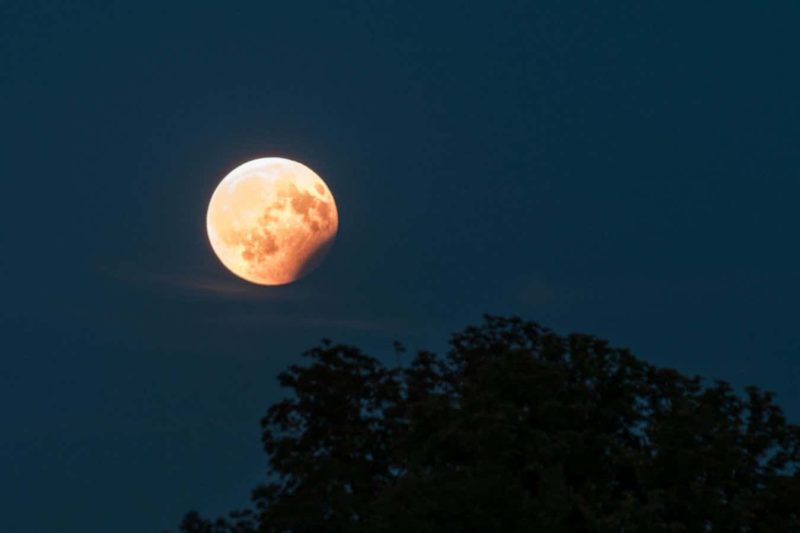A partial lunar eclipse in Regensburg, Germany, in 2017
Thomas Koschnick/Alamy
The moon is about to take the spotlight once again after a recent solar eclipse. On the night of Saturday, October 28, a partial lunar eclipse will be visible in various parts of the world, including the UK, Europe, Asia, and Africa. This stunning event will give the moon a reddish hue, adding to its mystique.
What time is the 28 October partial lunar eclipse?
The maximum of the eclipse will occur at different times depending on the location: 9:14 PM in London, 10:14 PM in Berlin, 11:14 PM in Moscow, 1:44 AM in Mumbai, and 4:14 AM in Hong Kong. The penumbral stage of the eclipse will begin approximately two hours before and end around two hours after the maximum. You can easily find the specific timings for your area by using free software like Stellarium.
How to watch the partial lunar eclipse
You don’t need any special equipment to witness the lunar eclipse as long as you live in a location where it will be visible and the skies are clear. The moon will appear red, with approximately 12% of it taking on this color during the maximum phase of the eclipse. If you have binoculars or a small telescope, they can enhance your viewing experience.
What is a lunar eclipse?
A lunar eclipse occurs when the moon moves into the shadow cast by Earth, blocking the sun’s light. This phenomenon can only happen during a full moon. However, lunar eclipses are not a regular occurrence due to the tilt of the moon’s orbit.
What causes a partial lunar eclipse?
A partial lunar eclipse takes place when the moon is not completely aligned with Earth and the sun. As a result, only a portion of the moon enters Earth’s shadow. Earth’s shadow consists of two parts: the dark inner part called the umbra and the outer part known as the penumbra. During the penumbral stage of the eclipse, the moon is in the outer shadow, causing it to darken slightly. The red color becomes visible when the moon enters the umbra.
Why does the moon turn red?
Unlike a solar eclipse, where the sun disappears from view, the moon doesn’t fully vanish during a lunar eclipse. This is because of Earth’s atmosphere. Even though the moon is in Earth’s shadow, the atmosphere scatters light, allowing only longer wavelengths, such as those at the red end of the spectrum, to pass through and reach the moon. The moon then reflects this red light back to us, creating a red or orange glow. This atmospheric phenomenon is also why the sun appears red during sunrise or sunset. Hence, lunar eclipses are often referred to as “blood moons.”
Why do eclipses come in pairs?
Eclipses occur when the moon’s tilted orbit, about 5 degrees compared to Earth’s orbit around the sun, aligns with the sun and Earth in a configuration known as syzygy. Solar eclipses happen during a new moon, while lunar eclipses take place during a full moon. Therefore, pairs of eclipses are typically separated by approximately two weeks.
Topics:








